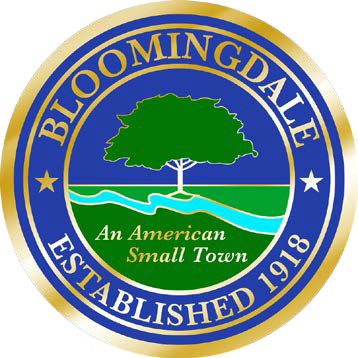The Borough of Bloomingdale strives continuously to provide its users with drinking water that meets or surpasses all state and federal standards.
In New Jersey, all public water suppliers are required to disinfect the drinking water prior to distribution. We bulk purchase water from Passaic Valley Water Commission (P.V.W.C.) that was treated at the North Jersey District Water Supply Commission (N.J.D.W.S.C.) Water Treatment Plant in Wanaque, New Jersey from water drawn from the Monksville and Wanaque Reservoirs. This plant uses a combination of chemicals, carefully blended, to purify the water for human consumption.
One way North Jersey and most other systems meet the disinfection requirement is by using chemical chlorine. Chlorine has an established historical health record of protecting the public from waterborne diseases in drinking water dating back to 1908 when it first introduced at the Jersey City Water Treatment Plant in Boonton, New Jersey. It is often recognized by leading health professionals as the single most important public health measure taken in the past 100 years. Together, Bloomingdale Utility Services, P.V.W.C. and N.J.D.W.S.C. constantly monitor the quality of your drinking water – before, during and after the treatment process.
All testing reports are available for your detailed review, and reports are provided to the New Jersey State Department of Environmental Protection Bureau of Safe Drinking Water as required by stSeptember 7, 2010 milky when it first comes out of the faucet. However, after standing in a container for a few moments, it clears from the bottom to the top. This is a naturally-occurring result of dissolved oxygen being released because of a change if temperature and water pressure. The tiny but visible air bubbles that form are completely harmless and, after a few moments, they slowly rise to the surface and dissipate.
Periodically, you may experience discolored water. This usually happens whenever a fire hydrant is used, or when there is a water main break that causes a disturbance in the normal flow of water through the iron main line pipes. Suspended iron particles can cause yellow or brown colored water depending on the amount of iron that is dislodged from the interior of the main line pipes.
The Water & Sewer Utility Services flushes all fire hydrants bi-annually to remove the accumulated iron from inside of the iron pipes and to perform necessary inspection and maintenance on each and every fire hydrant. Iron is not toxic at levels found in drinking water, but at levels above 0.3 milligrams per liter (mg/l) it can causing staining of laundry and even change the taste of the water.













